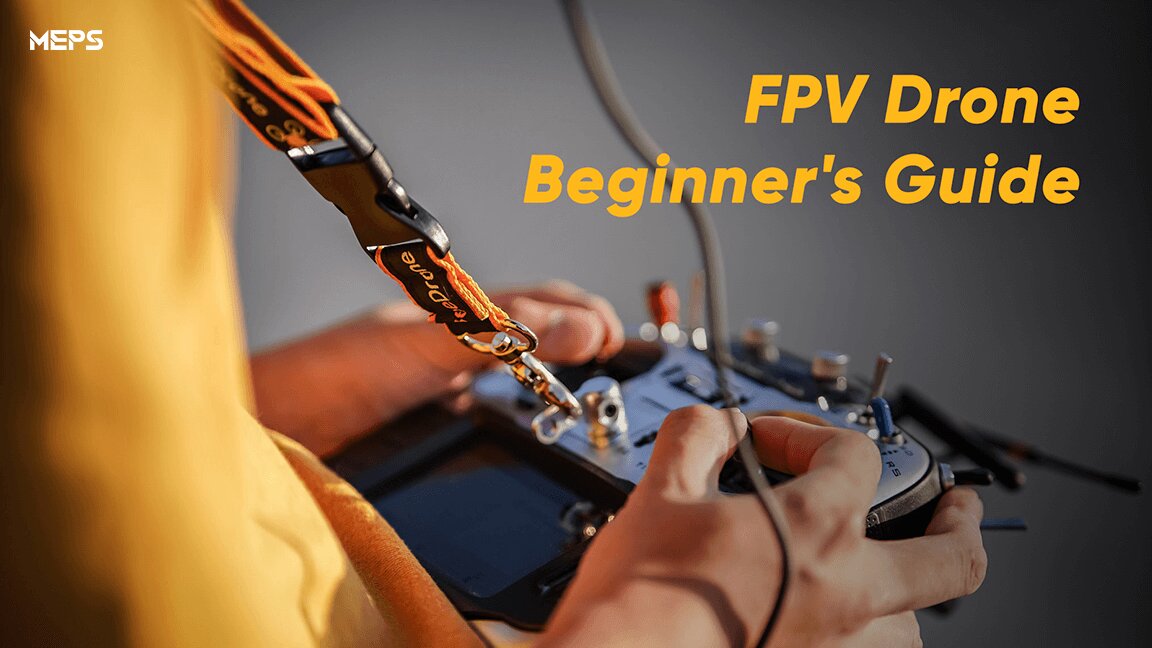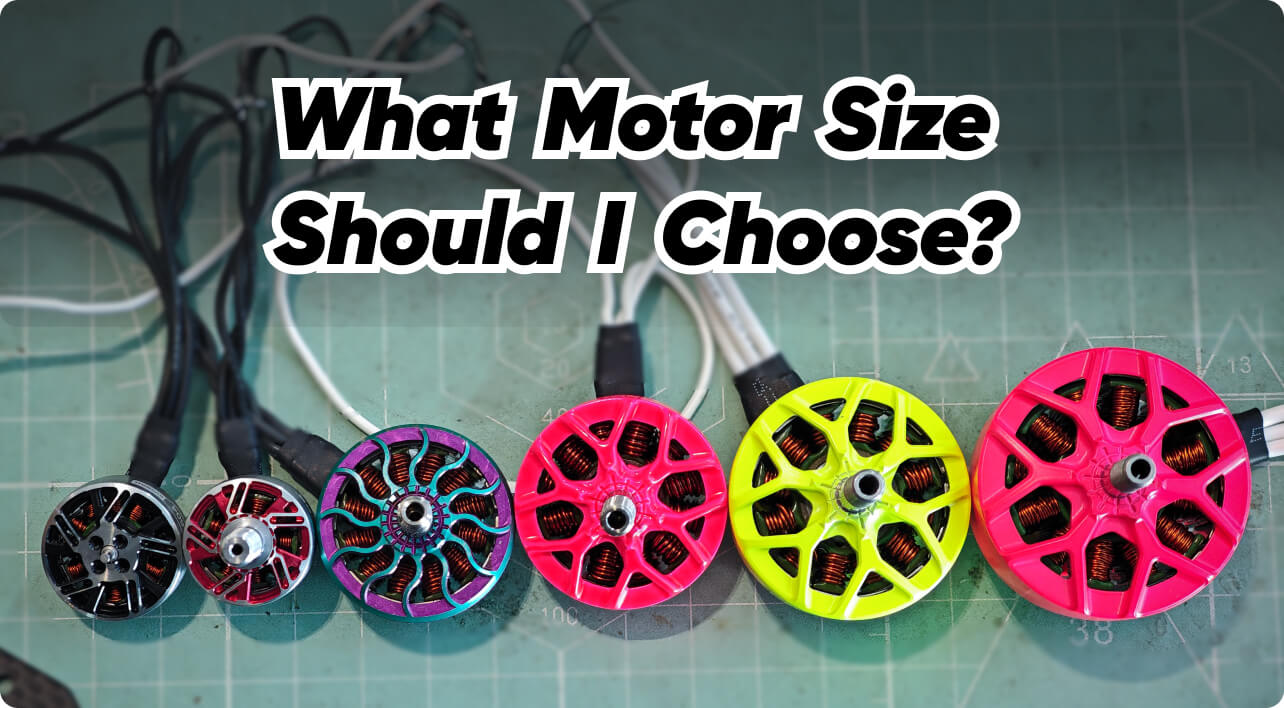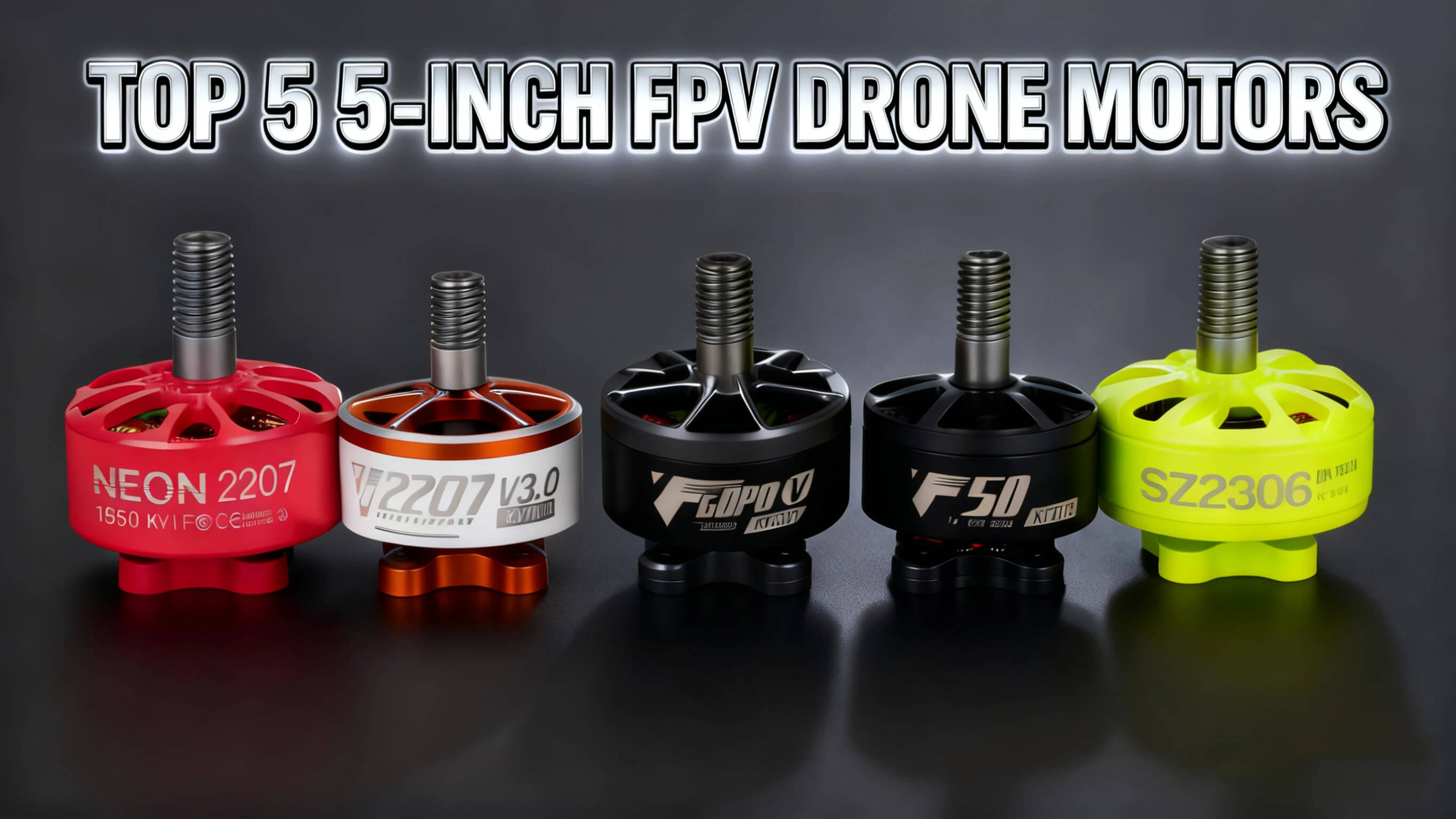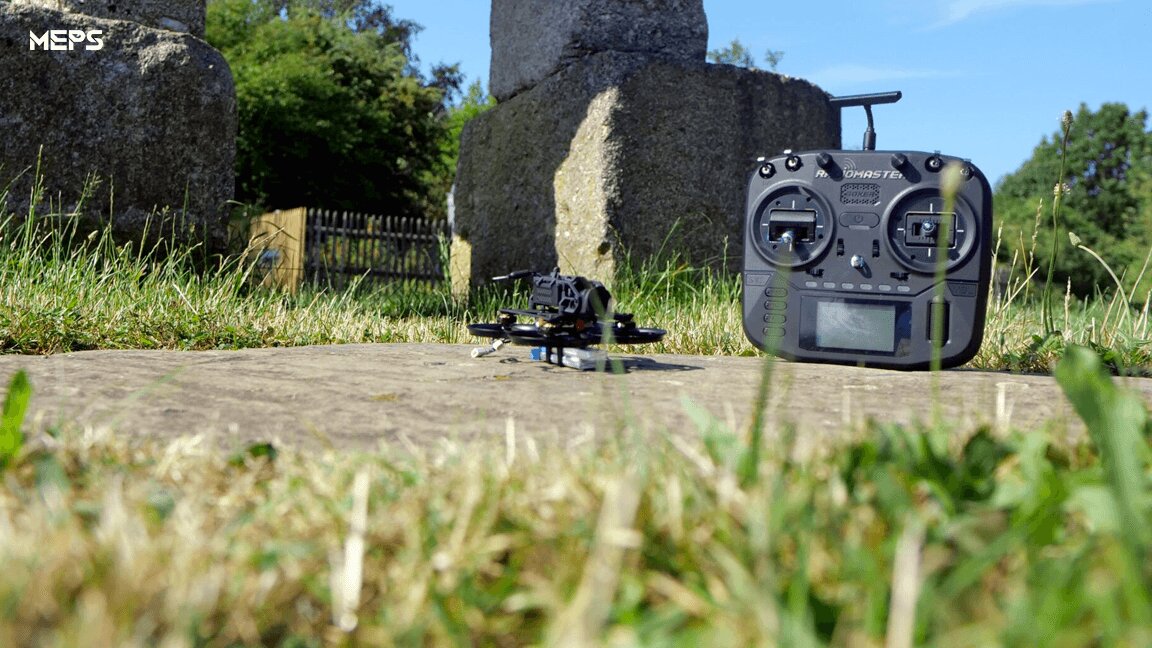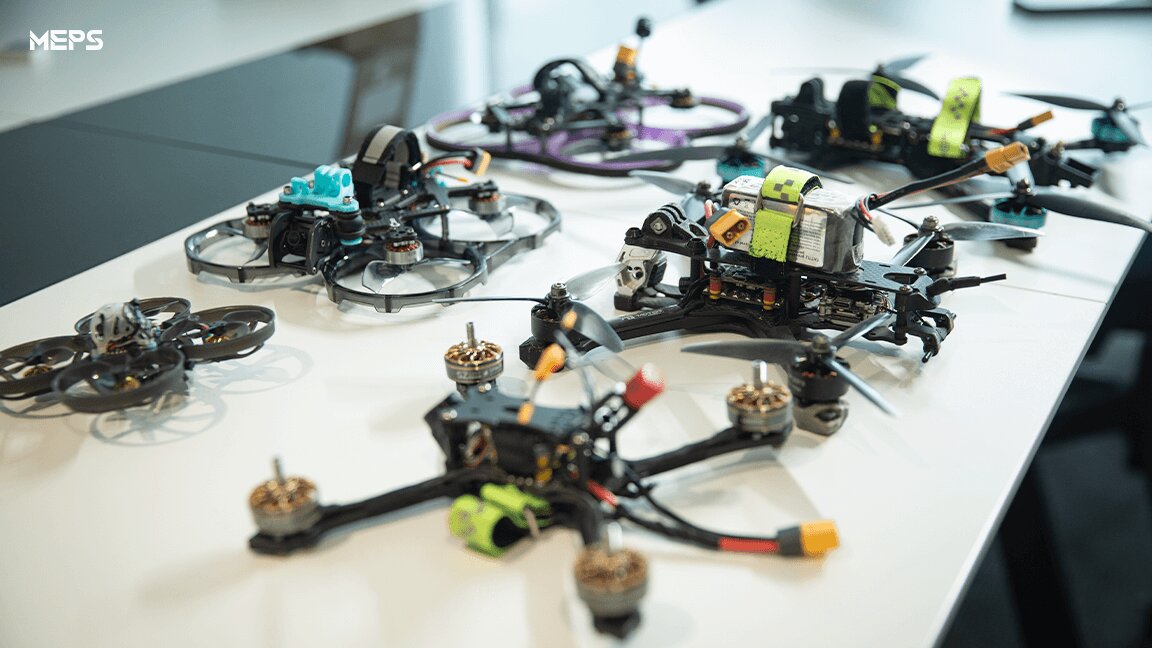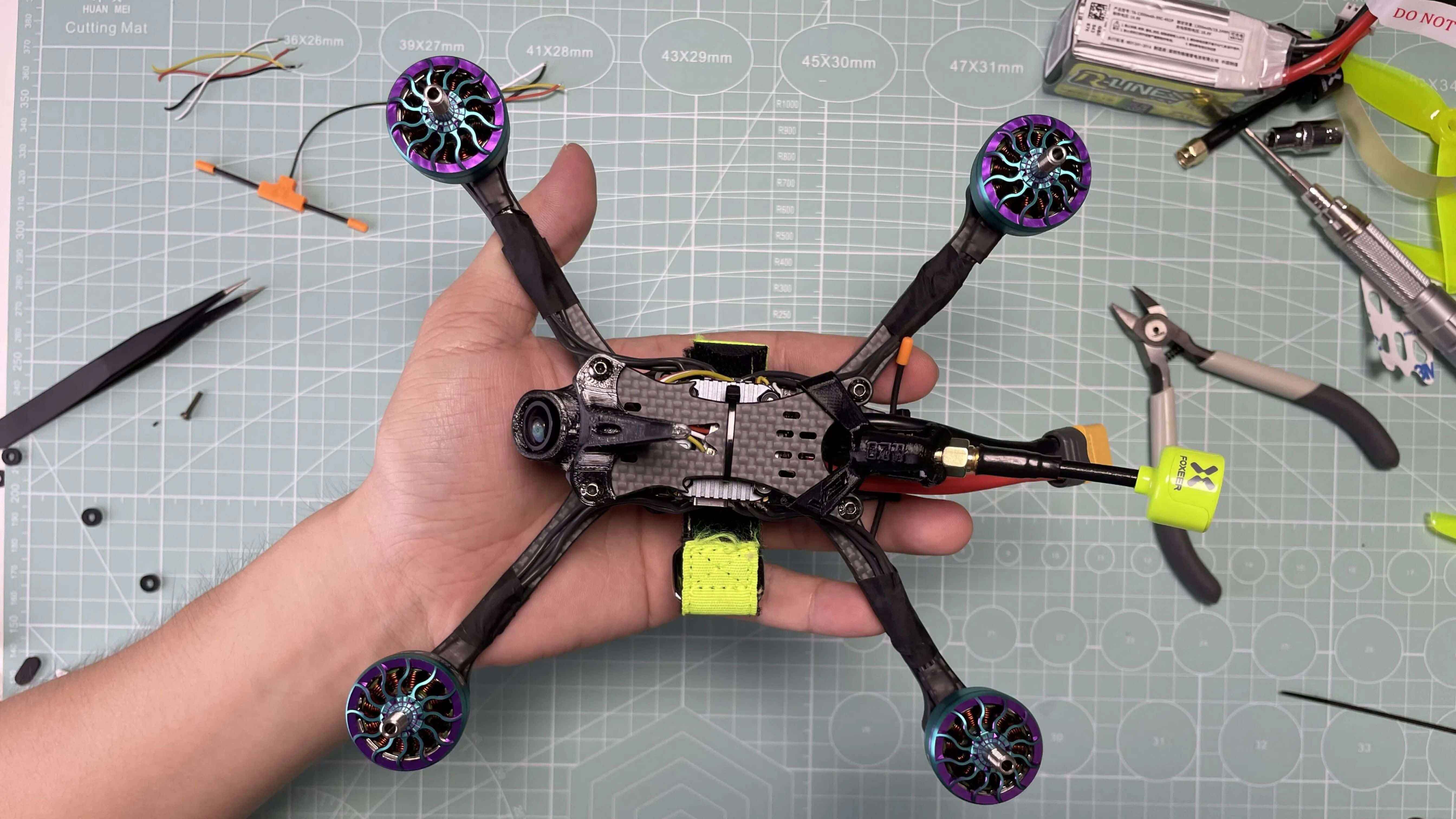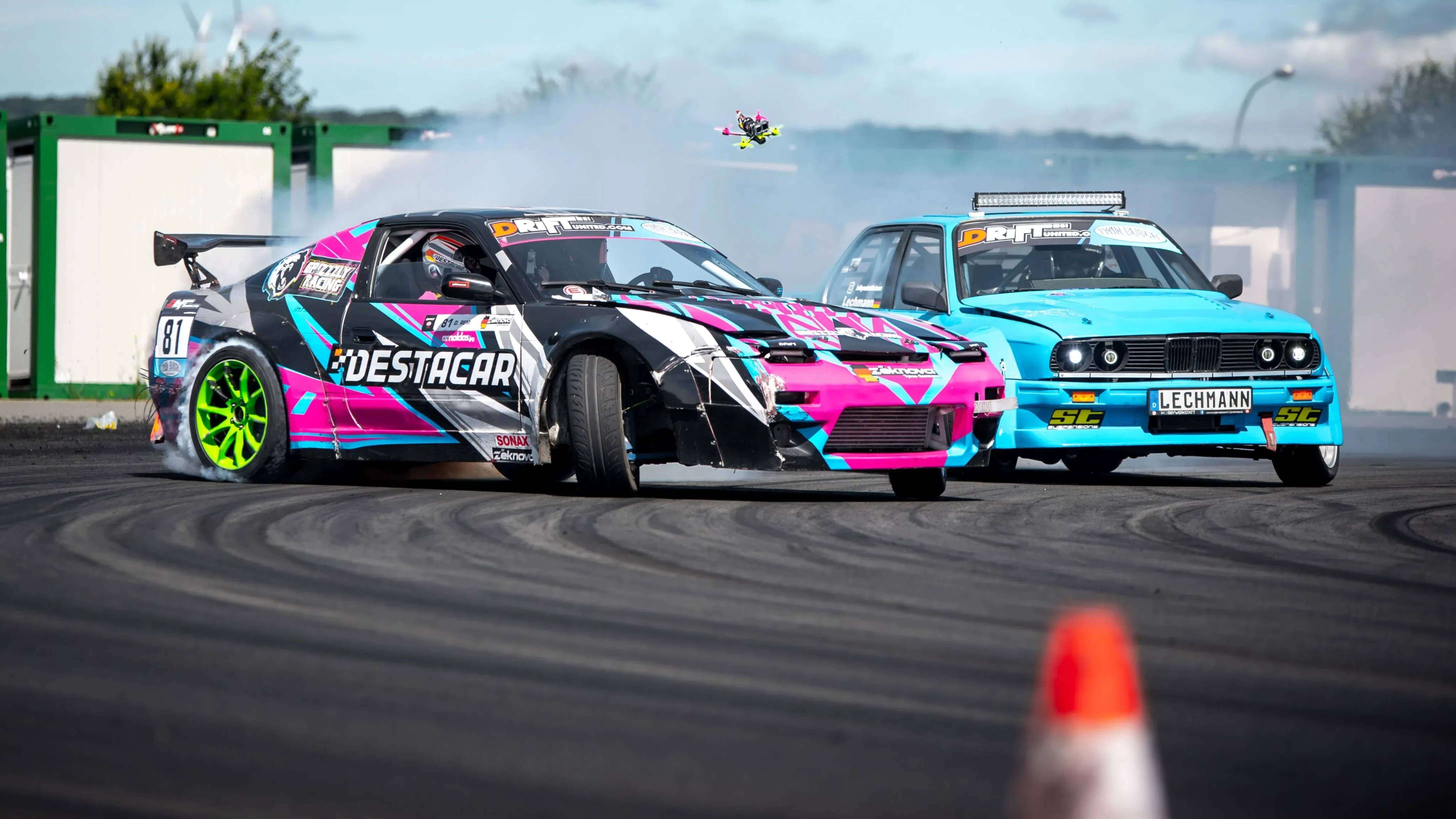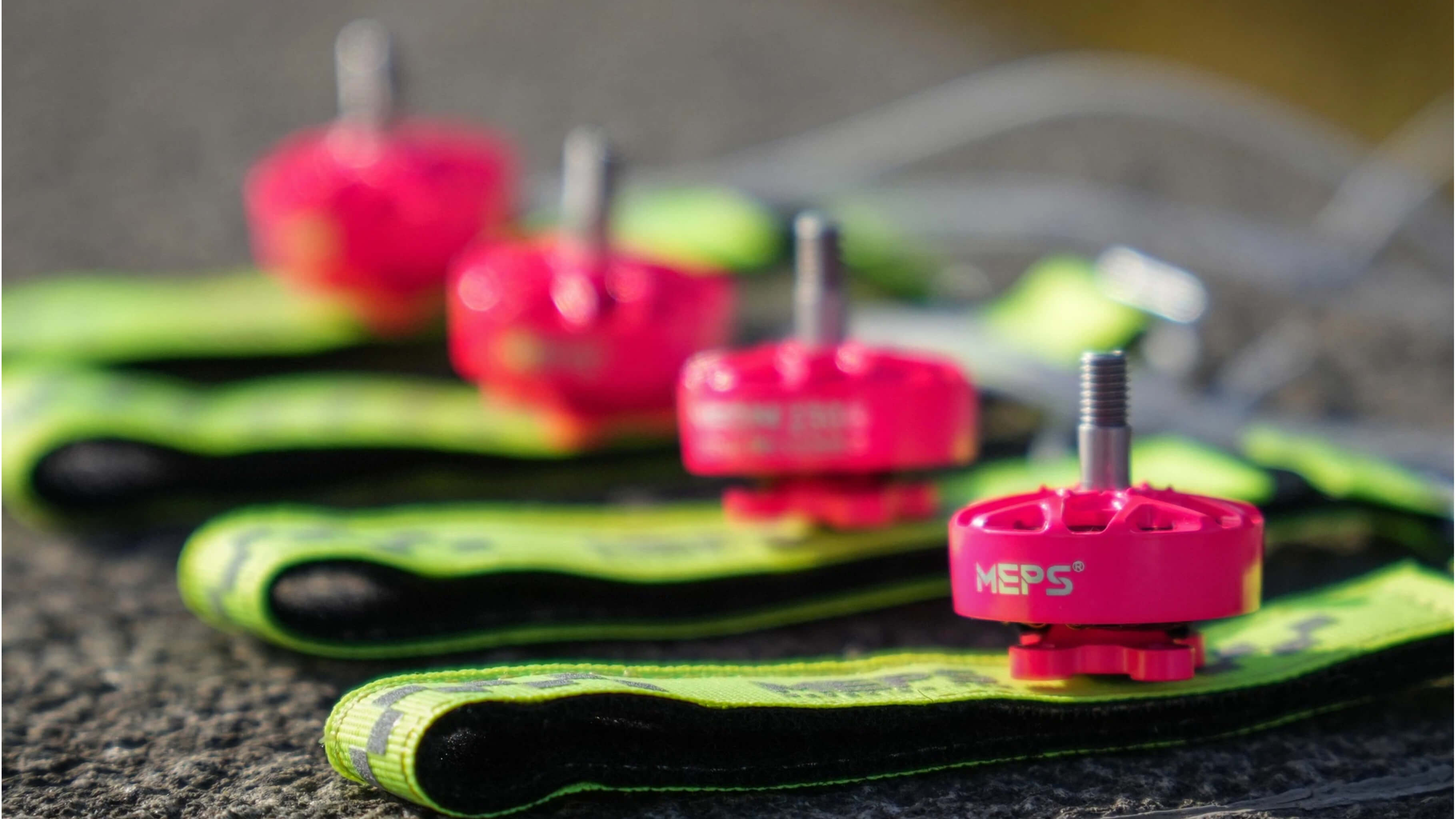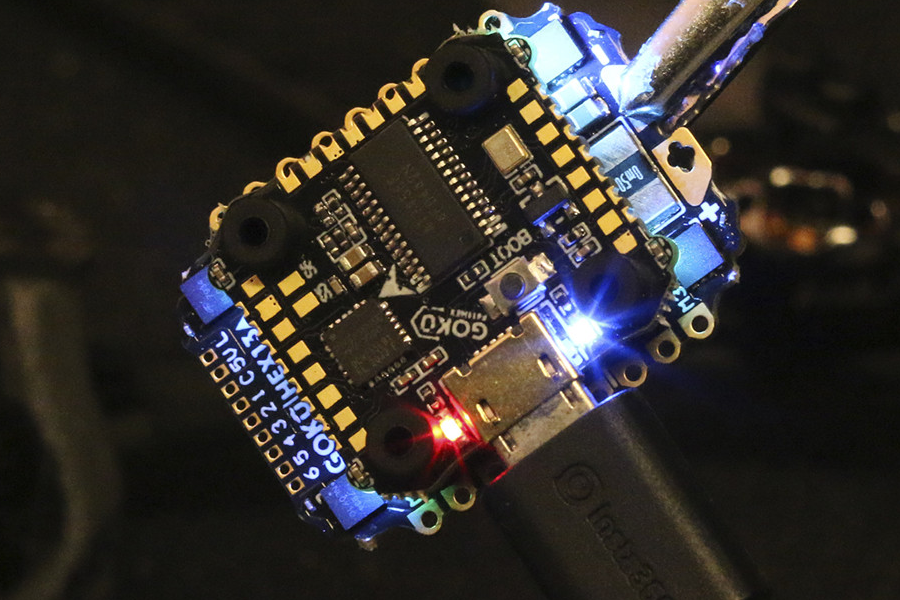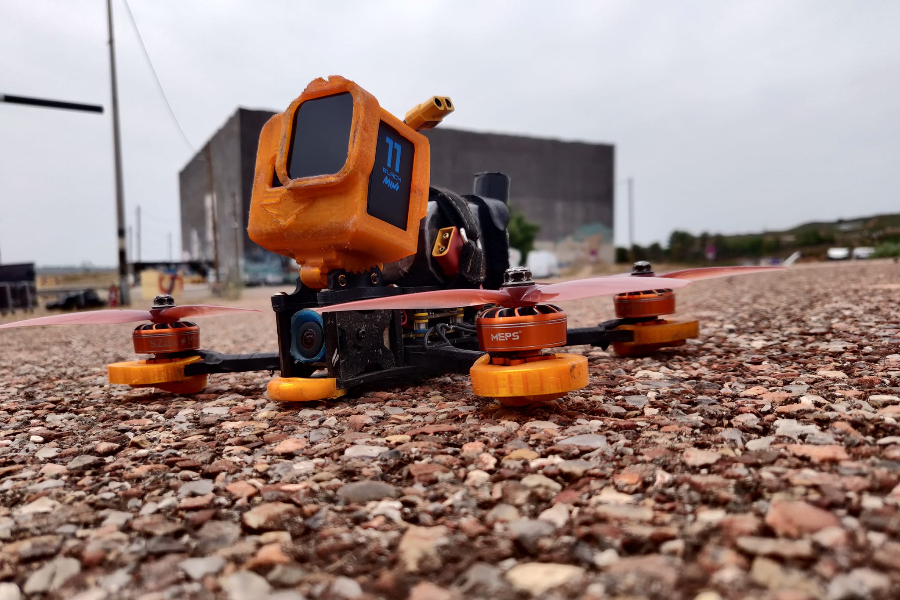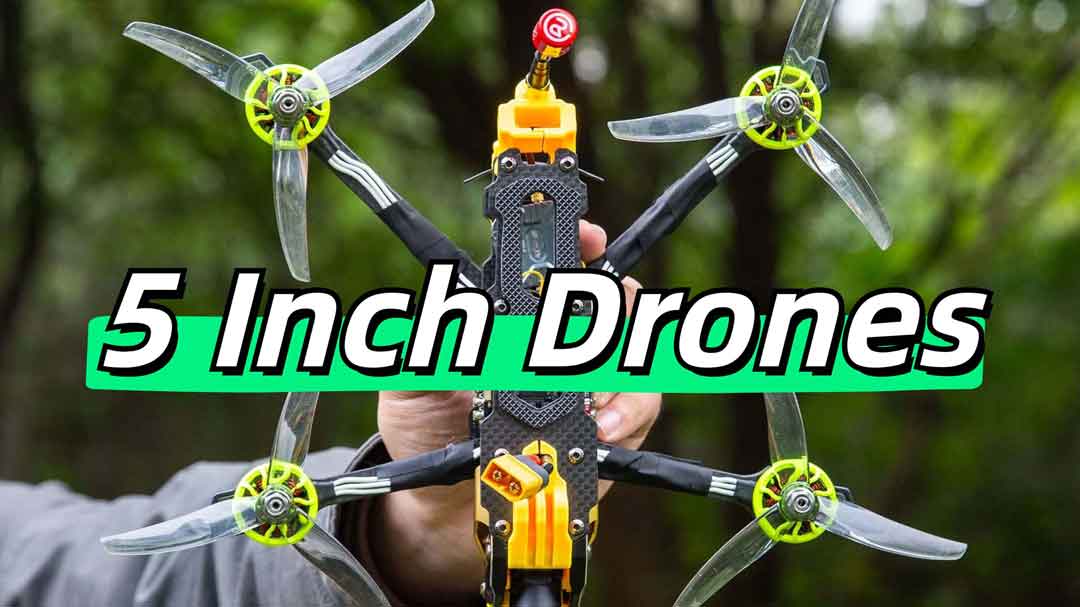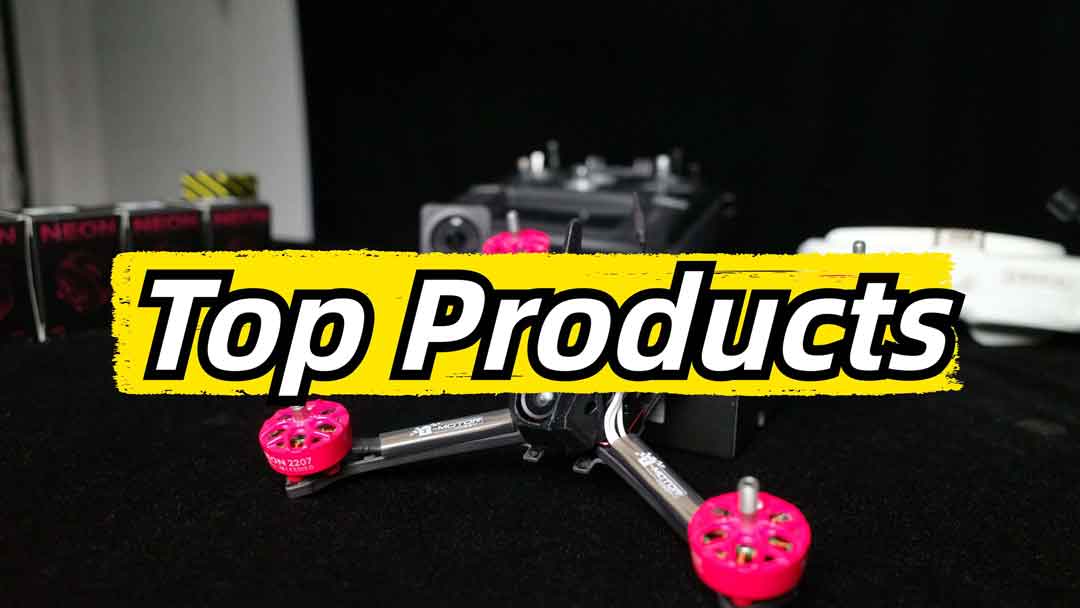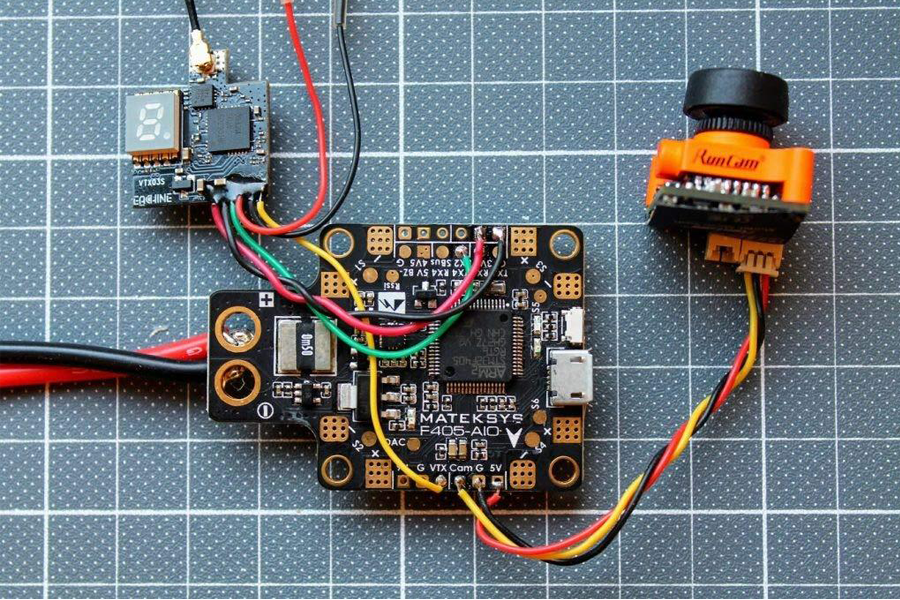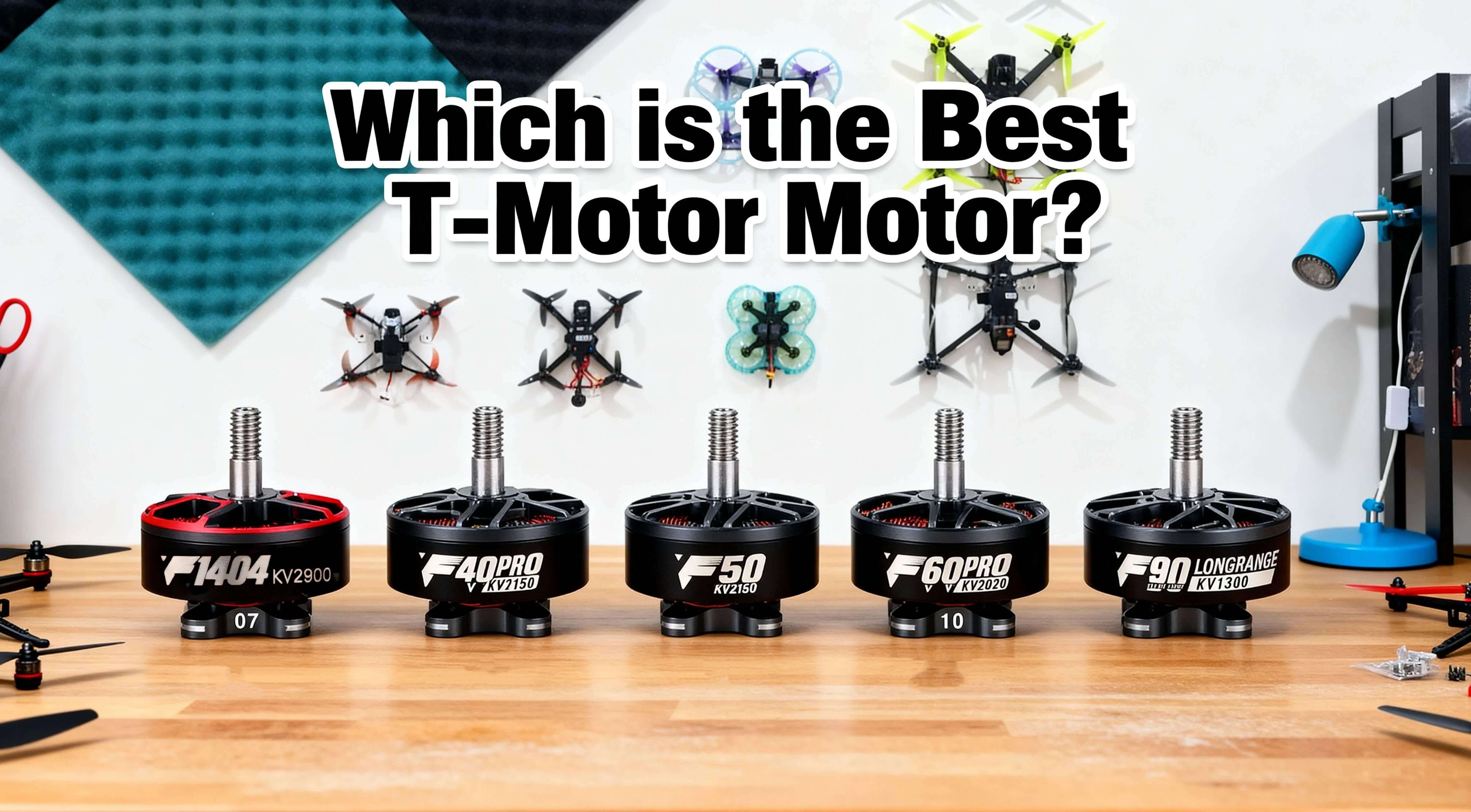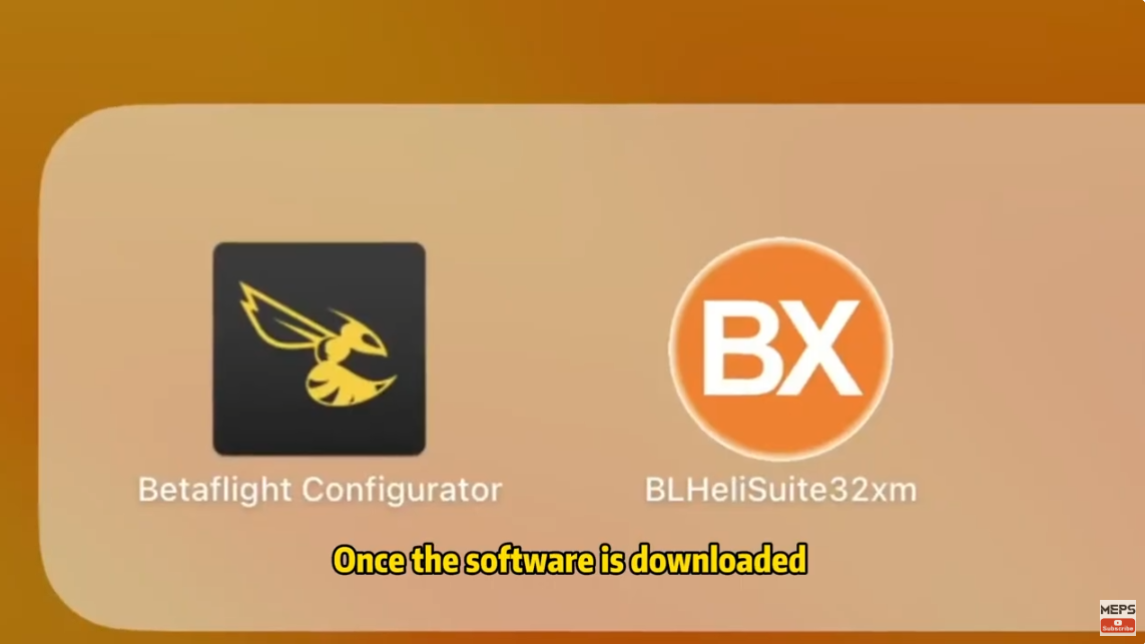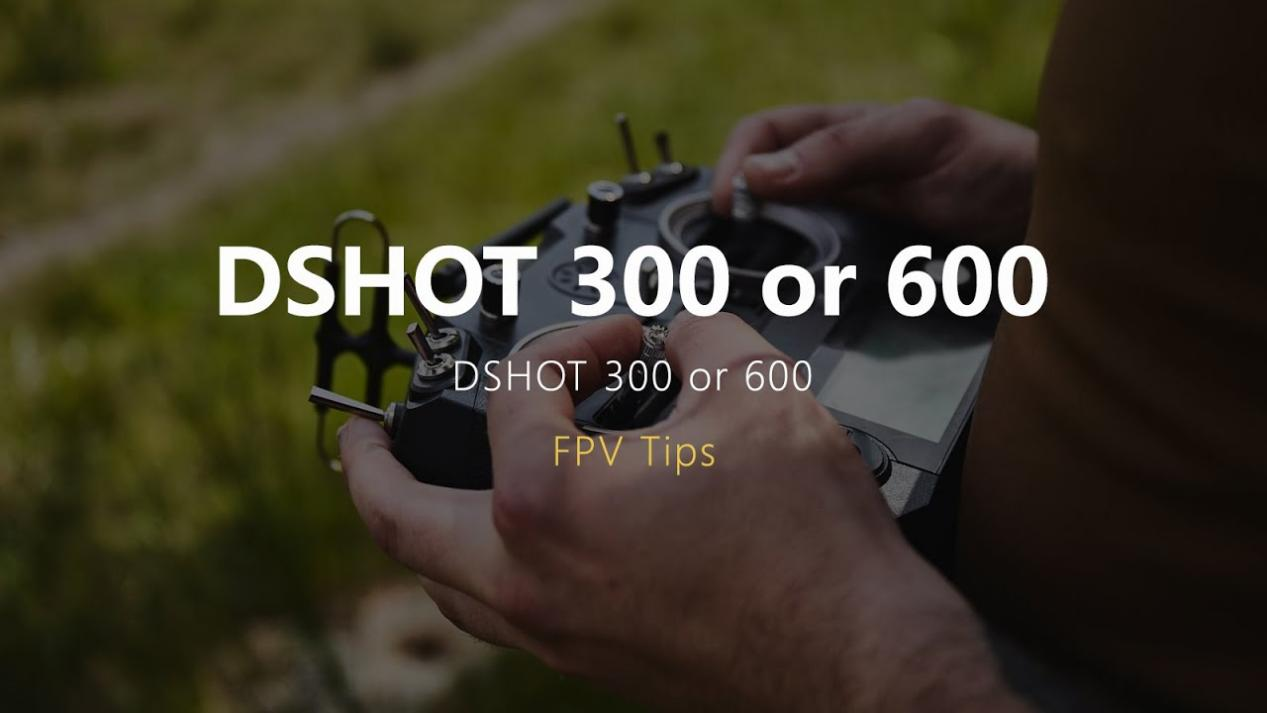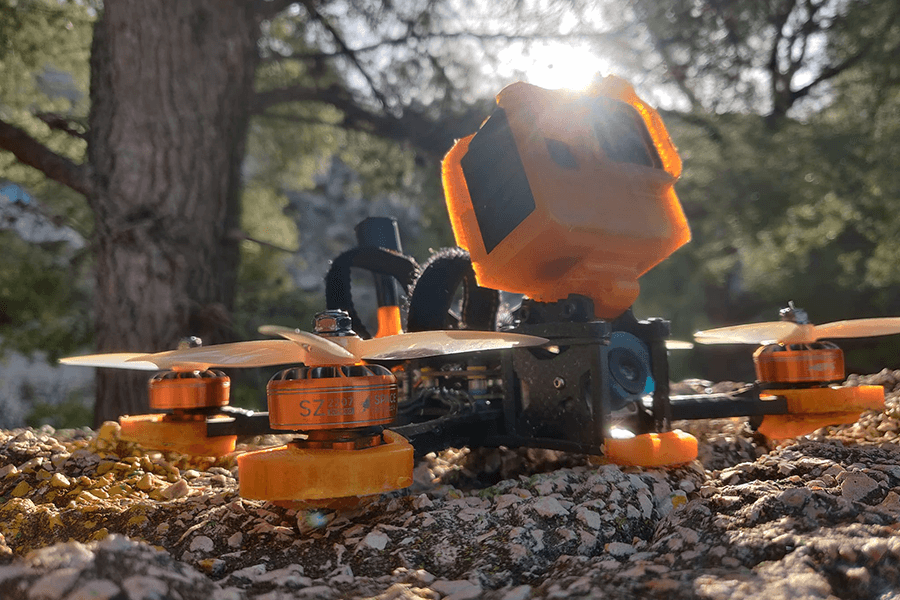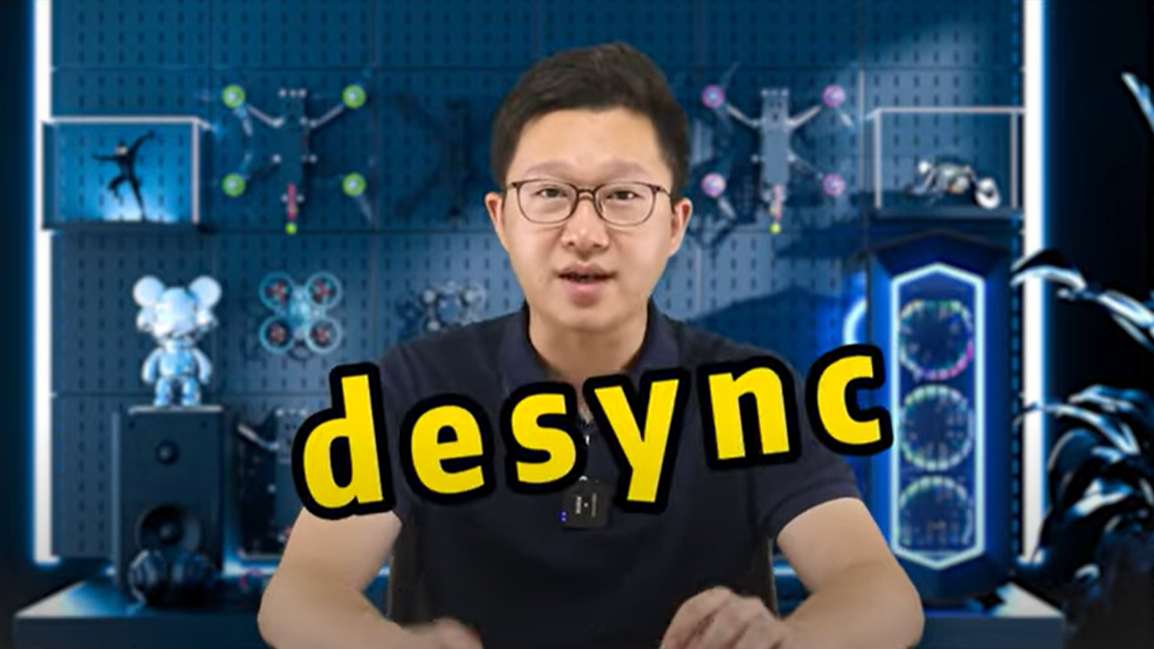Beginner’s Guide
-
Top 5 5-Inch FPV Drone Motors You Should Buy in 2025
When it comes to building or upgrading a 5-inch FPV drone, motors are the heart of performance. The right motor can determine your drone’s agility, efficiency, flight time, and even how it feels in the air. In 2025, motor technology continues to evolve—brands are pushing the limits with lightweight designs, higher efficiency, and more precise control. Whether you’re into freestyle flying, long-range cruising, or cinematic FPV, choosing the right motor will dramatically affect your results. Below, we’ll explore the Top 5 FPV motors for 5-inch drones in 2025, based on real-world performance, quality, and price-to-value ratio. MEPS SZ2306 FPV Brushless Motor The MEPS SZ2306 FPV motor stands out in 2025 as one of the most well-balanced and reliable choices for 5-inch FPV drones. Known for its smooth yet powerful flight characteristics, this motor combines exceptional build quality, durability, and value—making it suitable for both freestyle pilots and racers alike. Built from 6082 aluminum alloy with a titanium shaft and N52H arc magnets, the SZ2306 delivers high efficiency, instant throttle response, and a premium feel in every flight. The latest V2 version further enhances durability with thicker arms and improved impact resistance, ensuring your drone can handle rough landings and minor…- 0
- 0
- 28
-
2025 Update: What are the FPV Drone Laws and Safety Issues in FPV Flying?
Are FPV Drones Legal in the USA? The answer is yes. However, they must comply with the Federal Aviation Administration’s (FAA) regulations. These include drone registration, pilot certification for commercial use, and adherence to specific flying rules and no-fly zones. This guide will dive into FPV drone laws and the safety issues you need to be aware of when flying FPV drones. Understanding and complying with your local laws is essential for every FPV pilot. For high-quality and compliant FPV drones, parts, and accessories, be sure to visit the MEPSKING store. New Drone Law in 2025 Digital Flight Authorization System(DFAS) A new drone regulation that Homeland Security suggested might have a profound impact on American pilots. The digital flight authorization system(DFAS), which requires drone operators to register their identity, position, and purpose prior to takeoff, is explained in full in the video that follows. All drone kinds, including DJI, FPV, toy, and others, will be impacted by this rule. The FAA is developing a Digital Flight Authorization System to enhance security and manage drone operations. This system would require drones to be authorized before takeoff, specifying location, identification, and purpose. The system is expected to affect all drone pilots, including…- 0
- 0
- 2.7k
-
Types of FPV Drones Explained: Freestyle, Racing, Cinematic & More
FPV (First-Person View) drones have taken the drone community by storm, offering pilots an immersive flying experience. But not all FPV drones are built the same. Depending on your goals—whether it’s racing, performing tricks, capturing cinematic shots, or exploring vast landscapes—there’s a specific FPV drone type designed for you. If you're looking to explore or build your own FPV drone, platforms like MEPSKING offer a wide selection of high-quality components, complete kits, and accessories tailored for every type of pilot. From whoops to 5-inch beasts, MEPSKING is a one-stop shop trusted by the FPV community worldwide. In this guide, we’ll break down the main FPV drone types: Beginner-friendly FPV drones Freestyle FPV drones Racing FPV drones Cinematic FPV drones Long-range FPV drones Tiny Whoops (micro drones) Here are Some FPV Drone Types The FPV drone is often named by the rotor's rotational diameter. For example, the most common 5-inch machine refers to the rotor diameter of a 5-inch aircraft. In addition, crossover aircraft with rotor blades less than 3 inches is often defined by the axis distance of the diagonal two motors The common FPV drone classifications are as follows: Rotor diameter(inch)wheelbase(mm)applicationspeed(km/h)battery life(min)1.5″~2″50~100mmlong-range/aerial photography80 km/h3~52.5″100~140mmfreestyle / aerial photography100 km/h3~83″140~180mmfreestyle/aerial photography120…- 0
- 0
- 3.6k
-
How to Build a 5-Inch FPV Racing Drone (DIY Guide for 2025)
Want to get into the adrenaline-pumping world of FPV drone racing? Building your own 5-inch FPV racing drone is not just rewarding—it’s the best way to learn about your gear, fine-tune performance, and fix issues in the field like a pro. In this step-by-step tutorial, we’ll show you exactly how to build your own FPV racing drone using a DIY FPV racing drone kit. This guide is optimized for beginners and experienced pilots alike and includes expert insights on choosing FPV racing drone parts, assembly, and tuning. Whether you’re into DIY racing drone projects or want to compete on the race track, this is the guide for you. Who Is This Guide For? - Beginners wanting to build their first FPV racing drone - DIY tinkerers looking for a satisfying personal project - FPV racers who want a lightweight, high-speed drone optimized for racing Why Build a FPV Racing Drone Instead of Buying One? DIY FPV racing drone kits not only save money but help you truly understand your aircraft. You’ll know exactly how to troubleshoot, upgrade, or repair it. Most importantly, building a racing drone from scratch gives you a serious edge in performance tuning, weight reduction, and custom configuration. This video…- 0
- 0
- 1.4k
-
FPV Racing vs Freestyle vs Cinematic Drones: Full Guide for 2025
FPV (First-Person View) drones have evolved into diverse categories, each optimized for different flying styles and goals. Whether you’re drawn to high-speed races, expressive freestyle maneuvers, or cinematic aerial shots, understanding the differences between FPV racing, freestyle, and cinematic drones is crucial for selecting the right build and components. In this guide, we’ll break down the design features, flight characteristics, and component setups of each drone type — helping you make an informed decision for your next FPV project. FPV Racing Drones: Speed and Precision FPV racing drones are designed for maximum agility and acceleration, built to compete on tight circuits and handle split-second turns. Key Features Compact frame: Usually 5-inch or smaller, emphasizing low drag and rigidity. High-thrust motors: Designed for quick throttle response and top-end speed. Minimal payload: Only essential components are included to reduce weight. Optimized tuning: Tight PID settings for responsive, snappy control. Performance Highlights SpecificationTypical RangeTop Speed150–200 km/hFrame Size3"–5"Flight Time2–4 minutesMotor KV2400–2800KV (for 6S setups)Ideal EnvironmentRacing tracks, gates, and indoor arenas Recommended Components For competitive performance, you need motors and electronics that can handle extreme current and heat. Motor suggestion: T-Hobby F60PRO V 2207.5 Brushless Racing Motor for 5-inch FPV Drones, which is built for…- 0
- 0
- 270
-
Best FPV Motors in 2025: Top 10 Picks from Beginner to Professional
Choosing the right motor can make or break your FPV drone. Whether you’re a newcomer just learning to hover or a seasoned pilot chasing cinematic perfection, your motor choice directly impacts thrust, control, flight time, and reliability. In 2025, FPV motor technology has reached new heights. Manufacturers are refining magnet layouts, improving stator efficiency, and optimizing weight-to-thrust ratios like never before. Today’s FPV pilots have more motor choices than ever — but that can also make the decision overwhelming. That’s why we’ve put together this comprehensive FPV Motor Guide 2025, featuring the top 10 best FPV motors across four major categories: Beginner, Freestyle, Racing, and High-Performance. Why the FPV Motor You Choose Matters An FPV motor is more than just a spinning part — it’s the powerhouse that defines your drone’s agility and feel in the air. A well-chosen motor provides: Consistent Thrust: Smooth and predictable acceleration. Efficiency: Longer flight times and cooler operation. Durability: Resistance to crashes and temperature stress. Responsiveness: Fast RPM changes for tight control in freestyle or racing. With the FPV scene evolving, 2025 is the perfect time to upgrade your setup — whether for more speed, smoother cinematic footage, or improved efficiency. Entry-Level FPV Motors for Beginners Starting out in…- 0
- 0
- 67
Recent posts
- Troubleshooting Guide: Why FPV Motors Getting Hot? 03/11/2025
- Brushed vs Brushless Motors: Which Is Best for Your FPV Drone 03/11/2025
- Top 5 5-Inch FPV Drone Motors You Should Buy in 2025 30/10/2025
- 2025 Update: What are the FPV Drone Laws and Safety Issues in FPV Flying? 29/10/2025
- Types of FPV Drones Explained: Freestyle, Racing, Cinematic & More 28/10/2025
- Best FPV Stack for Your FPV Drone 23/10/2025
- Best FPV VTX for Beginners: Top Picks & Buying Guide 2025 23/10/2025
Builds
-
Best FPV Stack for Your FPV Drone
Choosing the best FPV stack is one of the most important steps in building or upgrading your FPV drone. A reliable FPV drone stack—which includes both the FC and ESC—directly affects flight stability, responsiveness, and overall performance. In this guide, we’ll walk through everything you need to know about FPV stacks, from understanding what they do to comparing popular models like the Diatone Mamba and Neutron RC, and finally, our top FC ESC stack recommendations for every pilot level. Why is it Important to Choose the Right FC ESC Stack? A high-quality FPV stack serves as the heart and nervous system of your drone. It determines how well your quad reacts to inputs and handles flight data in real-time. Choosing the best FC ESC stack ensures smoother control, better efficiency, and long-term reliability. Flight Controller (FC) – The Brain of Your Drone Interprets pilot input from the transmitter and sends signals to the ESCs. Controls the motors, flight modes, and various other functions. Offers features like GPS, return to home, OSD (On-Screen Display), and blackbox recording. Electronic Speed Controller (ESC) – The Muscle Behind Thrust Controls the speed and direction of each motor based on FC commands. Receives signals from…...- 0
- 1
- 1.8k
-
How to Build a 5-Inch FPV Racing Drone (DIY Guide for 2025)
Want to get into the adrenaline-pumping world of FPV drone racing? Building your own 5-inch FPV racing drone is not just rewarding—it’s the best way to learn about your gear, fine-tune performance, and fix issues in the field like a pro. In this step-by-step tutorial, we’ll show you exactly how to build your own FPV racing drone using a DIY FPV racing drone kit. This guide is optimized for beginners and experienced pilots alike and includes expert insights on choosing FPV racing drone parts, assembly, and tuning. Whether you’re into DIY racing drone projects or want to compete on the race track, this is the guide for you. Who Is This Guide For? - Beginners wanting to build their first FPV racing drone - DIY tinkerers looking for a satisfying personal project - FPV racers who want a lightweight, high-speed drone optimized for racing Why Build a FPV Racing Drone Instead of Buying One? DIY FPV racing drone kits not only save money but help you truly understand your aircraft. You’ll know exactly how to troubleshoot, upgrade, or repair it. Most importantly, building a racing drone from scratch gives you a serious edge in performance tuning, weight reduction, and custom configuration. This video…...- 0
- 0
- 1.4k
-
What is the best fpv drone under $200 in 2025?
Entering the world of FPV (First-Person View) doesn’t have to cost a fortune. Whether you’re just starting your FPV journey or looking for a backup drone for practice, there are plenty of budget FPV drones under $200 that deliver impressive performance, durability, and flight experience. In this guide, we focus on two cost-effective FPV builds: 2.5-inch Cinematic Drone 5-inch Freestyle Drone Websites And Economic Fpv Drone Components Let's start by listing the websites where you can purchase materials for our budget-friendly build. Unfortunately, there are fewer sites with excellent prices, but fortunately, there are still some available. For materials for a budget build, you should consider purchasing from the following sites: Mepsking.shop: This site offers great prices on stacks and motors. It's a good option to consider once you've chosen the frame to buy stacks and motors that are compatible with that frame. Stonehobby.com: Excellent for choosing receivers, video systems, GPS, buzzers, etc. This site offers the best prices. Aliexpress.com: It provides a wide selection of budget-friendly frames. Banggood.com: While it used to be an excellent e-commerce platform, unfortunately, it now offers very few items at a good price. Prices have also increased on this site for other products. In…...- 0
- 0
- 710
Parts
-
Brushed vs Brushless Motors: Which Is Best for Your FPV Drone
If you’re building or upgrading your FPV drone, choosing between a brushed and brushless motor is crucial. While brushed motors are cheaper and simpler, brushless motors dominate modern FPV builds due to their power, efficiency, and durability. Brushless drone motors have revolutionized the world of brushless electric motors, offering numerous advantages over brushed motors. In this comprehensive guide, we will explore the principle of operation of brushless drone motors, highlighting their key features, benefits, and applications. What are Brushless drone motors? At its core, a brushless drone motor is an electric motor that operates on direct current (DC) with a rotor composed of permanent magnets. Unlike brushed motors, brushless drone motors do not rely on sliding electrical contacts (brushes) on the motor shaft for operation. Instead, the commutation of the current in the stator windings and the resulting variation in the magnetic field are controlled electronically. This design eliminates mechanical resistance, reduces the risk of sparks at high speeds, and significantly minimizes the need for periodic maintenance. How Brushless Drone Motors Operate? The principle of operation of brushless drone motors involves the interaction between the rotating magnetic field generated by the permanent magnets on the rotor and the variable magnetic…- 0
- 1
- 530
-
Best FPV Stack for Your FPV Drone
Choosing the best FPV stack is one of the most important steps in building or upgrading your FPV drone. A reliable FPV drone stack—which includes both the FC and ESC—directly affects flight stability, responsiveness, and overall performance. In this guide, we’ll walk through everything you need to know about FPV stacks, from understanding what they do to comparing popular models like the Diatone Mamba and Neutron RC, and finally, our top FC ESC stack recommendations for every pilot level. Why is it Important to Choose the Right FC ESC Stack? A high-quality FPV stack serves as the heart and nervous system of your drone. It determines how well your quad reacts to inputs and handles flight data in real-time. Choosing the best FC ESC stack ensures smoother control, better efficiency, and long-term reliability. Flight Controller (FC) – The Brain of Your Drone Interprets pilot input from the transmitter and sends signals to the ESCs. Controls the motors, flight modes, and various other functions. Offers features like GPS, return to home, OSD (On-Screen Display), and blackbox recording. Electronic Speed Controller (ESC) – The Muscle Behind Thrust Controls the speed and direction of each motor based on FC commands. Receives signals from…- 0
- 1
- 1.8k
-
Best FPV VTX for Beginners: Top Picks & Buying Guide 2025
When stepping into the world of FPV drones, one of the first pieces of equipment you’ll need to understand is the FPV VTX, or video transmitter. This small but powerful component determines how clearly and how far you can see when flying in first-person view. For beginners, finding the right FPV VTX is crucial — it can make your first flights smoother, safer, and far more enjoyable. In this guide, we’ll walk you through everything you need to know about FPV VTX systems, explain what to look for as a beginner, and recommend reliable options to get you started on the right frequency. If you want to buy more gear related to FPV, you can go to MEPSKING. What is an FPV VTX? An FPV VTX is a device that transmits real-time video from your drone to your FPV goggles or monitor. Without a VTX, you won’t be able to see what your drone sees, making FPV flying impossible. Beginner pilots often underestimate the importance of choosing the right VTX, but selecting a compatible and reliable unit is crucial for both performance and safety. The VTX determines: Range of video transmission: Higher power VTXs can reach longer distances but may…- 0
- 1
- 1.5k
-
Best FPV Motors in 2025: Top 10 Picks from Beginner to Professional
Choosing the right motor can make or break your FPV drone. Whether you’re a newcomer just learning to hover or a seasoned pilot chasing cinematic perfection, your motor choice directly impacts thrust, control, flight time, and reliability. In 2025, FPV motor technology has reached new heights. Manufacturers are refining magnet layouts, improving stator efficiency, and optimizing weight-to-thrust ratios like never before. Today’s FPV pilots have more motor choices than ever — but that can also make the decision overwhelming. That’s why we’ve put together this comprehensive FPV Motor Guide 2025, featuring the top 10 best FPV motors across four major categories: Beginner, Freestyle, Racing, and High-Performance. Why the FPV Motor You Choose Matters An FPV motor is more than just a spinning part — it’s the powerhouse that defines your drone’s agility and feel in the air. A well-chosen motor provides: Consistent Thrust: Smooth and predictable acceleration. Efficiency: Longer flight times and cooler operation. Durability: Resistance to crashes and temperature stress. Responsiveness: Fast RPM changes for tight control in freestyle or racing. With the FPV scene evolving, 2025 is the perfect time to upgrade your setup — whether for more speed, smoother cinematic footage, or improved efficiency. Entry-Level FPV Motors for Beginners Starting out in…- 0
- 0
- 67
-
Best 5 T-Motor Motors for Freestyle, Racing & Long-Range FPV Drone
T-Motor has long been one of the most trusted brands in the FPV world. Whether you’re building a freestyle beast, a racing rocket, or a long-range cruiser, T-Motor offers a motor for every flying style. In this guide, we compare the 5 best T-Motor FPV motors — covering performance, durability, and real-world flight feedback. If you want to learn more about the FPV motor, check the guide: How to Choose FPV Drone Motor A Detailed Guide Quick Comparison Overview of T-Motor Motors MotorKVDimensions (mm)Weight (g)Voltage RangeMax Current (A)Max Power (W)Recommended PropsT-Motor F14042900 / 3800 / 4600Ø17.9×16.69.343–6S10.45–20262–3163”–4” (Gemfan 3025, HQ 3x2x3)T-Motor F40 PRO V1950 / 215027.8×31.433.7–34.56S55.5–65.61354–15915” freestyle (T-Motor 5143, Ethix P3)T-Motor F502150 / 2200Ø27×29.528.36–28.566S54.8–56.631273–13155” racing (Gemfan 5143, HQ 5x4.3x3)T-Motor F60 PRO V 1750 / 1950 / 2020 / 255026.8×31.733.3–34.34–6S40.5–52.7825–12975” racing/freestyle (HQ 5x4.3x3, Gemfan 5143)T-Motor F901300 / 1500 / 1950Ø33.4×34.746.6–46.75–6S45.1–53.61059–13027” long-range (Gemfan 7042, HQ 7x4.2x3) T-Motor F1404 Motor for Micro FPV Drones Key Specs: Motor Dimensions: Φ17.9*16.6mm Lead: 24#AWG 150mm Shaft Diameter: 1.5mm Idle Current (10v): 0.4A (2900KV), 0.5A (3800KV), 0.6 (4600KV) Max.Power (the 60s): 262W (2900KV), 304W (3800KV), 316W (4600KV) Weight (Inc. Cable): 9.34g Internal Resistance: 310mΩ (2900KV), 195mΩ (3800KV), 138mΩ (4600KV) Configuration: 9N12P Rated Voltage (Lipo): 4-6S (2900KV), 3-4S (3800/4600KV) Peak Current…- 0
- 0
- 46
-
How to Rotate FPV Motor Direction?
Your FPV drone cannot fly if even one motor spins in the wrong direction — motor rotation is absolutely critical for stable flight. But how can you reverse your FPV motor direction safely and effectively? There are two main ways to change the direction of your FPV motor: Hardware solution: swap the motor wires connected to the ESC. Software solution: adjust settings in your flight controller or ESC configuration software (such as Betaflight or BLHeliSuite). This comprehensive 2025 guide explains each method step-by-step, helping you understand not only how to rotate your FPV motor but also why it matters for drone stability, control, and flight performance. What are the types of FPV motor rotation direction? FPV motors can rotate clockwise (CW) or counterclockwise (CCW). This determines how the propellers push air and affects flight balance. In FPV drones, propeller rotation configurations are classified into two main types: Props-in (default rotation in most firmwares) Props-out (reverse configuration) Each has distinct benefits and trade-offs depending on flight style, drone size, and environment. Quick tip: You can learn how to properly attach your props to match motor direction here: FPV Attach Props to Motors (Step-by-Step). What Is “Props-Out” Configuration and Why Use It?…- 0
- 0
- 1k
Parameter
-
How to Start a Beginner FPV Drone Build Bash (Under $250)
Why Durability Matters for New FPV Pilots Every new FPV pilot crashes—sometimes a dozen times in a single flight session. That’s why the first rule of a beginner FPV drone build bash is simple: get a durable drone. A tough quadcopter won’t break easily, protects your wallet, and lets you practice flying instead of repairing. Durability comes from: Strong carbon fiber frames Flexible props or prop guards Lightweight builds that reduce crash force Easy-to-replace, affordable components When you prioritize these features, you’ll spend less time fixing and more time learning. Recommended Drone to Bash: Best Options for Beginners If you are just entering FPV, choosing the right size and type of quad matters: 2.5–3.5 inch budget FPV drones → Compact, safer, and easier to repair. Great for practicing in small parks or indoor spots. Cinewhoop drones with prop guards → Highly durable drone frames that protect your props during crashes, making them one of the best recommended drones to bash. 5 inch drones → The standard for freestyle, but not ideal for beginners. They’re powerful but costly to repair, so they are not the best choice for a budget basher build. If you want to fly right away, many budget FPV drones come as Ready-to-Fly kits,…...- 0
- 0
- 40
-
How to Update BetaFlight Firmware on Your FPV Drone?
Introduction: This guide outlines the process of updating firmware on FPV drones, covering both flight controller and ESC. It emphasizes the importance of firmware updates for optimal performance and compatibility with the latest features. The steps include preparation, updating flight controller firmware using Betaflight, configuring settings, and flashing both 8-bit and 32-bit ESC firmware. By following these steps, users can ensure their drones are equipped with the latest firmware for enhanced performance and functionality. Preparation: Assemble drone and download necessary firmware update software for flight controller and ESC. Flight Controller Update: Connect flight controller to computer, enter firmware burning mode, select appropriate firmware version in Betaflight, flash firmware, configure settings, and reboot. 8-bit ESC Update: Power up drone, connect to web interface, read setup, select firmware, flash firmware, and reboot. 32-bit ESC Update: Similar process as 8-bit, but using different software and firmware selection. Conclusion: Updating firmware is crucial for optimal drone performance; follow the steps to ensure compatibility and enhanced functionality. What you need: Freestyle Recommended: Racing Recommended: Video Overview Before diving into tuning your FPV drone, it's essential to update the firmware for both the flight controller and ESC. This ensures optimal performance and compatibility with the latest…...- 0
- 0
- 969
-
DSHOT300 vs DSHOT600, What are the Difference Between Them?
Introduction: DSHOT300 and DSHOT600 are digital ESC protocols used in FPV drones, differing primarily in signal rates. The choice between them depends on the flight controller type, with DSHOT300 suited for AIO controllers and DSHOT600 for F7 or F405-based controllers. Understanding these differences allows pilots to optimize their drone's performance by selecting the appropriate protocol. Definition: DSHOT300 and DSHOT600 are digital ESC protocols used in FPV drones to regulate throttle communication between flight controller and ESCs. Selection Criteria: Choose DSHOT300 for AIO flight controllers (F411 chip) and DSHOT600 for F7 or F405-based controllers. Key Difference: DSHOT600 offers higher throttle signal rate compared to DSHOT300, potentially enhancing drone performance. Optimizing Performance: Selecting the appropriate protocol ensures efficient communication, resulting in smoother flight and improved responsiveness. What you need: Freestyle Recommended: Racing Recommended: Video Overview Now we'll explore the differences between DSHOT300 and DSHOT600 and their significance in ESC protocol settings. What is DShot? DShot is a digital ESC protocol for communicating throttle (and some commands) between your FC ↓ ESC. It differs from all other ESC protocols in that it is a digital signal. It offers enhanced performance and dependability, which is a positive step for ESC communication. You can give…...- 0
- 0
- 3k
Troubleshooting and Maintenance
-
Troubleshooting Guide: Why FPV Motors Getting Hot?
If your FPV motors are getting hot, it’s usually caused by improper tuning, prop mismatch, over-throttling, or insufficient cooling. To fix it, check your PID tune, motor timing, prop size, and ESC settings. Always ensure good airflow and avoid flying on low-efficiency props or overly aggressive rates. Why is it Important to Cool FPV Motor? After a vigorous flight, it's common for FPV motor to get warm, but how hot is too hot? Pinching the engine by the bell with your fingertips—ideally immediately after landing—is a simple technique to find out. It's acceptable if you can comfortably hold your fingers there for more than ten seconds. It may indicate overheating if it gets too hot to handle. When fpv motors overheat, the winding's coating may melt, creating internal electrical shorts that will emit smoke and cause irreversible damage to the fpv motor. Overheating motors can eventually affect performance since the magnets lose their magnetic strength; Certain magnet types may be more heat resistant than others. Heat wastes more energy, which reduces flying duration. How FPV Motors Work? FPV (First-Person View) motors are a crucial component of an FPV drone, responsible for converting electrical energy from the battery into mechanical energy… -
How to Rotate FPV Motor Direction?
Your FPV drone cannot fly if even one motor spins in the wrong direction — motor rotation is absolutely critical for stable flight. But how can you reverse your FPV motor direction safely and effectively? There are two main ways to change the direction of your FPV motor: Hardware solution: swap the motor wires connected to the ESC. Software solution: adjust settings in your flight controller or ESC configuration software (such as Betaflight or BLHeliSuite). This comprehensive 2025 guide explains each method step-by-step, helping you understand not only how to rotate your FPV motor but also why it matters for drone stability, control, and flight performance. What are the types of FPV motor rotation direction? FPV motors can rotate clockwise (CW) or counterclockwise (CCW). This determines how the propellers push air and affects flight balance. In FPV drones, propeller rotation configurations are classified into two main types: Props-in (default rotation in most firmwares) Props-out (reverse configuration) Each has distinct benefits and trade-offs depending on flight style, drone size, and environment. Quick tip: You can learn how to properly attach your props to match motor direction here: FPV Attach Props to Motors (Step-by-Step). What Is “Props-Out” Configuration and Why Use It?…- 0
- 0
- 1k
-
How to handle fpv drone signal loss and interference?
Drone filmmaking and photography with a FPV drone are thrilling methods to capture breathtaking aerial pictures and feel the thrill of flying. However, they also have certain drawbacks, such as FPV signal loss and interference, which might sabotage your film and even lead you to crash. Using high-quality FPV components is key to maintaining a stable connection. Explore premium FPV parts from MEPSKING — including FPV Motors, Flight Controllers, and ESCs — designed for reliable performance and smoother flights. We'll go over some advice in this article to help you prevent or solve these problems and enjoy your FPV drone flights. Understanding FPV Signal Loss and Interference Before jumping into solutions, it’s important to know the difference between signal loss and signal interference. Signal Loss means your transmitter and receiver have lost connection completely — usually due to range, obstacles, or equipment failure. Signal Interference happens when external signals (like Wi-Fi, power lines, or other transmitters) disrupt your connection. Common Types of FPV Signal Interference: Wi-Fi congestion in urban areas (especially on 2.4GHz). Magnetic or metal structures reflecting radio waves. Other pilots’ VTX signals overlap in the same band. Poorly shielded electronics in your build. Main Causes of FPV Drone… -
How to Soft Mount a Flight Controller for Better FPV Performance?
A soft mount flight controller reduces vibrations from motors and props, giving your gyro cleaner data. This improves PID tuning, stability, video quality, and extends component life compared to a hard-mounted FC. Looking for a complete setup? Check out our building guide: How to Build a 5-Inch FPV Racing Drone? What Is a Soft Mount Flight Controller? A soft mount flight controller uses rubber grommets, silicone dampers, or O-rings to reduce vibrations reaching the gyro sensor. Instead of bolting the FC rigidly into the stack, the soft mount setup cushions it, filtering out motor noise and frame vibrations. Hard mount: FC is bolted directly to the frame. Stable, but every vibration is transferred to the gyro. Soft mount: FC sits on rubber grommets, gummies, or foam pads. Vibrations are absorbed before they reach the gyro. This small detail can dramatically change how your quad flies. Here is a collection of FPV flight controllers. Why Soft Mounting Matters for FPV Pilots? When flying FPV, vibrations from motors, props, and even the frame itself are unavoidable. These vibrations travel straight into the flight controller gyro, which is extremely sensitive. If the gyro picks up too much “noise,” the FC struggles to understand…- 0
- 0
- 434
-
FPV Motor Bearings: How to Check Damage and Replace Them?
As an FPV pilot, keeping your FPV motor bearings in top shape is key to smooth, stable flight. Damaged motor bearings can cause: Unusual vibrations or buzzing Reduced thrust and control precision Mid-air instability or crashes Key points to maintain and repair: Inspect bearings regularly for wear or damage. Understand common causes of motor bearing failure. Perform motor bearing replacement when needed. Keep your FPV drone running safely and efficiently. Mastering these steps ensures your drone flies reliably, protects your motors, and improves flight performance. What Are FPV Motor Bearings and Why They Matter? Brushless FPV motors use tiny high-speed motor bearings to support the rotor and reduce friction. They’re the unsung heroes of your powertrain. Good bearings keep the motor spinning true, generating smooth thrust and precise control. When they wear out, friction increases, causing heat buildup, power loss, and wobble. Even a slightly rough bearing can destabilize your quad during high-speed maneuvers. See More: What is the Structure of Drone Motor? Signs Your FPV Motor Bearings Are Damaged Here’s how I spot bad bearings before they ruin a flight: Grinding or scratching noise when spinning motors by hand Vibration in goggles footage even after balancing props Loose or…- 0
- 0
- 517
-
How To Fix Desync In 59 Seconds?
Introduction: FPV desync happens when an ESC loses sync with its motor, causing the motor to stall or cut out mid-flight. To fix it: inspect your hardware, add a low-ESR capacitor, and tune BLHeli & Betaflight settings like rampup power, demag compensation, and motor idle to stabilize your system. What is Desync Issue? FPV desync (ESC desync) occurs when the Electronic Speed Controller (ESC) fails to keep up with the motor’s commutation timing. Once the ESC loses track of the motor’s position, the motor stalls and your drone can violently spin (death roll) and crash. Typical signs of FPV motor desync: Sudden flip or roll mid-air (usually just one motor stops) Stuttering noise from one motor Blackbox logs showing a motor command hitting 100% while thrust drops For example: Sometimes in flying, when you push the throttle and do some action, one of your motors will stop spinning, and then most likely you will crash. When reviewing the black box data, you may find the control signal curve for the motor increases rapidly to 100%. However, the gyroscope records indicate that the aircraft's attitude did not respond as expected to this motor speed increase; instead, it suddenly dropped to zero. Pro…

